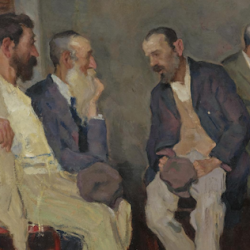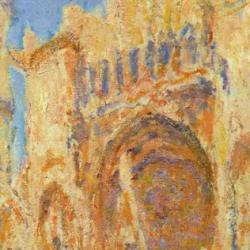I confess. I’m a sucker for books on the Trinity, and for books on the tabernacle. When someone combines these two topics in a discussion of the foundations of mathematics, as Vern Poythress does in Redeeming Mathematics, I’m hooked.
Poythress has been busy redeeming nearly everything recently – Science, Philosophy, Sociology. There are common themes throughout his body of work: The use of Trinitarian concepts and patterns of thought; the deployment of the Symphonic multi-perspectivalism that Poythress developed along with John Frame; a commitment to work through the foundations of every discipline from a self-consciously theological perspective; creative use of biblical theology. Poythress writes straightforwardly about complicated subjects, and his series of books is a treasure of stimulating insight.
What hath the tabernacle to do with mathematics? Well, the Bible gives dimensions for the tabernacle. That seems too obvious to mention, but Poythress digs some intriguing things out of it. It puts it in the context of a discussion of “addition” and within a treatment of “imaging.” The tabernacle is an image of God’s glory, and so the mathematical proportions of the tabernacle reveal the harmony and beauty of God: The tabernacle images God, and does so mathematically. Further, the tabernacle is itself an image of the creation, an architectural model of a perfected cosmos, and so the mathematical proportions of the tabernacle hint at the numerical proportions and mathematical harmonies of God’s cosmic house. In short, “By God’s design, arithmetic relationships hold for the tabernacle. They can also be expected to hold for the universe as a whole” (77-8).
There is internal imaging in the tabernacle too: “The Most Holy Place is an image of heaven. The Holy Place is an image of heaven and of the Most Holy Place. The tabernacle courtyard, surrounding the tabernacle, is also a holy space, and so is a kind of image of the Holy Place.” The world as a whole is imaged by the tabernacle. And in this process of radiating imaging, we have an image of the human race: “The whole human race has come into existence by a process of repeated fathering, beginning with Adam” (81). Humanity exists by a process of addition, by a dynamic of “what is next,” a notion of succession from which, Poythress argues using the theories of Giuseppe Peano, all of arithmetic can be derived.
The harmonious God is imaged in a world of harmony that is (among other things) mathematical in nature, and this imaging in creation reflects the internal imaging of the Triune God, the Father’s begetting of the Son. Thus succession, what comes next, mathematical relationships are grounded in the being of God, which is reflected in the creation, in the succession of human generations, and in the tabernacle.
This is only a small bit of Poythress’s argument, but I hope it’s enough to sucker the reader in to reading one of the most creative theologians around.














